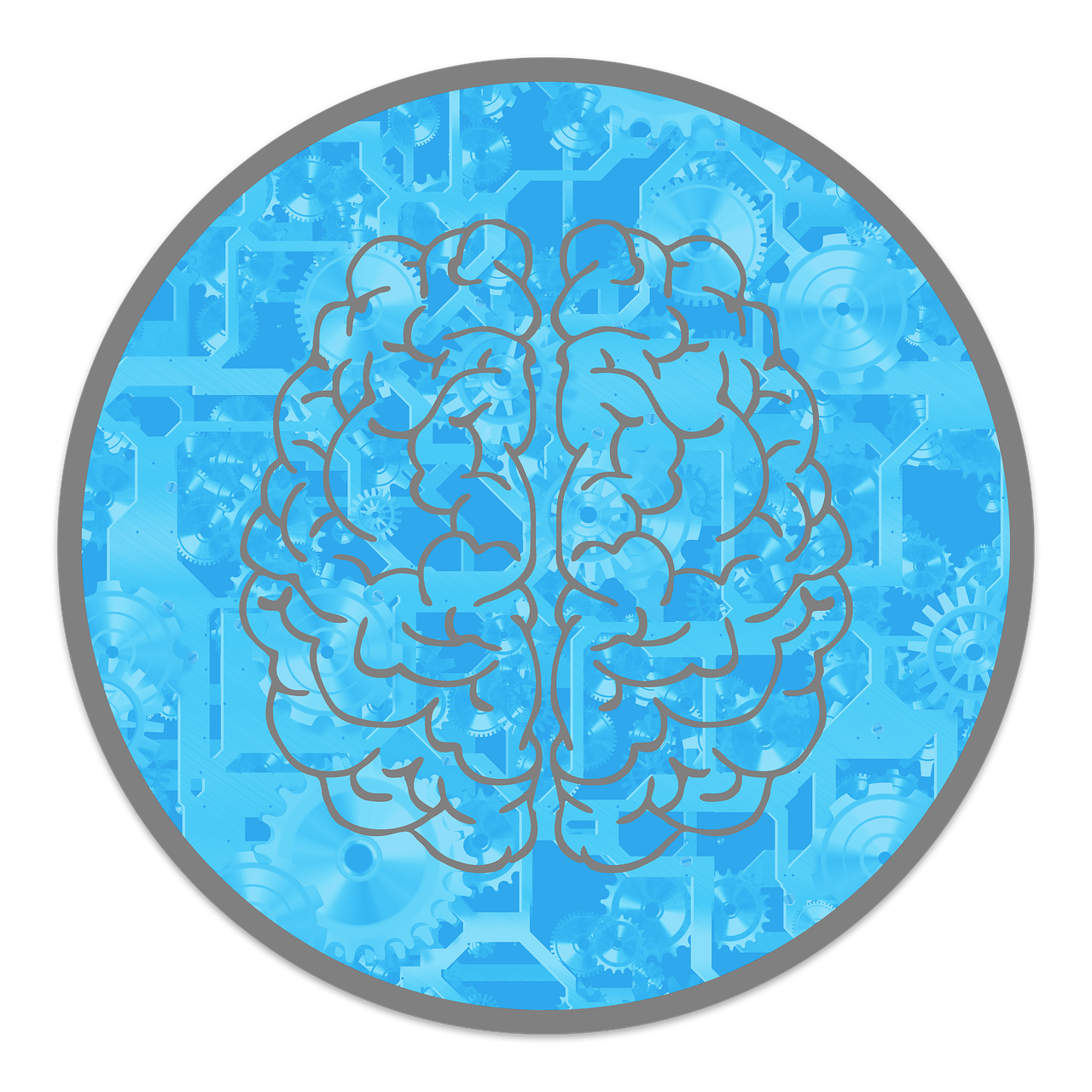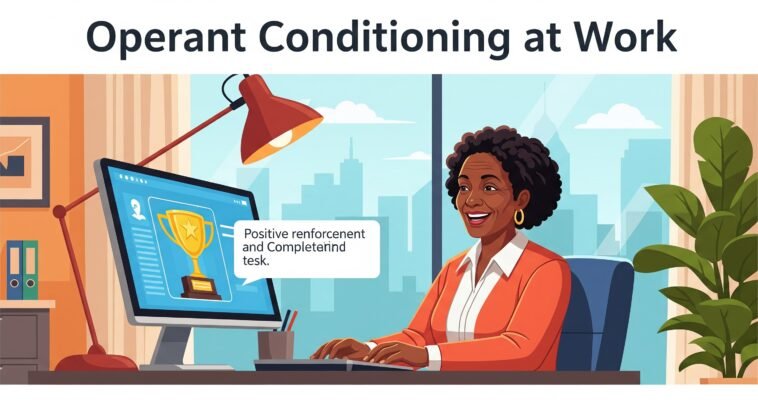
Today’s workplaces are ditching boring memos and leaning into game mechanics and behavioral psychology to keep people motivated.
Think: earning points at work like it’s Duolingo for your KPIs.
When companies use gamification and operant conditioning (aka reward-based feedback), engagement skyrockets.
Studies show 85% of employees get more into their work when it feels game-like. And 90% say gamified learning? Total win.
It’s not just hype—the global gamification market is set to jump from $43B in 2024 to $172B by 2030. That’s a lot of badges and dopamine.
Understanding Operant Conditioning in the Workplace
Let’s talk about B.F. Skinner—psych legend and the guy who basically cracked the code on behavior at work.
His big idea? People repeat stuff that gets rewarded and avoid stuff that gets them in trouble.
Simple. Effective. Basically the behavioral version of “likes” and “timeouts.”
The four pillars of operant conditioning
Positive reinforcement
You crush a project? You get a bonus, a shoutout in the team chat, or maybe even a Friday off.
It’s the “treat yo’ self” method—and it works.
Negative reinforcement
Your team hits their targets, and suddenly… no more overtime!
Or your boss stops breathing down your neck. You earned peace. That’s the reward.
Positive punishment
Miss a bunch of deadlines? Boom—extra training sessions or a not-so-fun meeting with HR.
Nobody’s happy about it, but it sends a clear message.
Negative punishment (take away the good stuff)
Skipping responsibilities might cost you flexible hours or that team bonus.
It’s like Netflix locking you out because you forgot to pay—ouch, lesson learned.
Why does it matters?
This isn’t just psych 101—it’s a playbook for managing people like humans.
Operant conditioning helps teams understand what’s expected and what happens when you meet (or miss) the mark.
When done right, it builds a culture where good work gets noticed, and the not-so-great stuff fades out.
So yeah, Skinner may not have known Slack or spreadsheets, but he definitely understood people.

The Rise of Gamification in Modern Workplaces
Gamification isn’t just for gamers anymore—it’s changing how we work.
It means adding game-like elements (think points, levels, badges) to everyday tasks so work feels a little less like… well, work.
Why it’s catching on? Because people love progress, feedback, and a little friendly competition.
That’s human nature—and smart companies are leaning into it.
In fact, 70% of Global 2000 companies are already using some version of it.
And with tech like AR, VR, and AI stepping in? This is just getting started.
Core elements of workplace gamification
Points and scoring systems
Think of this like your Fitbit, but for tasks.
Every time you finish a project, hit a goal, or show good behavior (like not replying-all), you earn points.
It tracks progress and low-key shows who’s on fire.
Badges and achievements
Got certified in something? Nailed a training? You earn a digital badge—basically your workplace version of a gold star or “achievement unlocked” pop-up.
It’s proof you’re leveling up, and yes, your coworkers will notice.
Leaderboards and rankings
These are public rankings of who’s crushing it—individually or in teams.
Friendly competition kicks in, and suddenly even Bob from accounting wants to finish onboarding modules first.
Progress bars and levels
Is there anything more satisfying than watching a progress bar inch toward 100%?
Whether it’s your sales goal or project completion, these visuals keep you motivated and make long-term goals feel doable.
Challenges and quests
Gamified work breaks down big goals into fun little missions.
It’s like turning a product launch into a series of side quests—clear objectives, better focus, and a stronger sense of “we got this.”
Rewards and incentives
Do the thing, get the reward.
Could be a bonus, time off, a coffee voucher, or just major bragging rights in the Slack channel.
Either way, it keeps people coming back for more.
The Psychological Synergy: How Gamification Leverages Operant Conditioning
Here’s the real reason gamification works: it sneaks in operant conditioning like a pro.
Every point, badge, or leaderboard isn’t just for show—it’s a built-in behavior booster, straight out of B.F. Skinner’s playbook.
Instant feedback
In most jobs, you do something great… and maybe hear about it two weeks later.
That delay? Kills motivation.
Gamification fixes this with instant rewards—points, badges, progress bars that light up the second you finish a task.
Your brain gets a quick “Yes! Do more of that!” message. And guess what? You do.
Random rewards
Weird but true: people love surprises. (Think loot boxes, gacha games, or the free guac on your birthday burrito.)
Gamified systems use variable reward schedules—like surprise shoutouts or random team bonuses—to keep you hooked.
That unpredictability keeps dopamine firing and engagement high.
Social recognition
Leaderboards, public achievements, and team wins tap into our love for status and belonging.
Nobody wants to be the only one not leveling up.
It’s not about creating cutthroat vibes—it’s about positive peer pressure that keeps everyone moving forward together.

Implementing Effective Gamification Programs
Gamification can totally level up employee engagement—but only if you plan it like a boss.
Slapping points on tasks won’t cut it. You need strategy, empathy, and a little psychology.
Here’s the real-world playbook:
Step 1: Define clear objectives
First things first—what’s the goal? More sales? Better teamwork? Safer factory floors?
Clear targets help you build a game system that actually does something, not just looks cool on paper.
Step 2: Understand your audience
Not everyone’s into leaderboards and badges.
Sales teams might love competition. Creatives? Maybe not so much.
Some folks vibe with quests and skill unlocks instead. Learn what your team responds to—or you’ll build a game no one plays.
Step 3: Design meaningful rewards
Good rewards feel worth it. Sure, money talks—but don’t underestimate stuff like shoutouts, extra flex days, cool training opps, or even a well-placed GIF in the group chat.
If it makes people feel seen and valued, you’re doing it right.
Step 4: Create progressive difficulty
Start easy, then raise the stakes. People want to feel challenged, not crushed.
Think of it like a game that starts with a tutorial and ends with a boss fight.
Keep it interesting, not impossible.
Step 5: Ensure fairness and transparency
Nothing kills engagement faster than shady rules or secret scoring.
Keep the rules simple, the system transparent, and make sure everyone knows how to win.
Fair game = fun game.
Overcoming Common Implementation Challenges
Gamification can seriously boost engagement—but only if you avoid the classic traps.
Here’s what trips most teams up (and how to fix it before it flops):
Avoiding over-gamification
It’s tempting to throw points, badges, and glitter on everything—but if your dashboard looks like Candy Crush, people start eye-rolling.
Fix it: Keep it fun, but tied to real goals. Game mechanics should highlight good work—not replace it.
Maintaining long-term interest
Everyone’s pumped for week one… then crickets. That shiny new leaderboard? Now a ghost town.
Fix it: Treat it like a live game. Drop seasonal events, refresh challenges, offer new rewards. Think “Netflix content calendar,” not “set it and forget it.”
Addressing generational differences
Not everyone loves badges.
Gen Z might thrive on streaks and scoreboards, while older employees may prefer a handwritten thank-you or a Friday shoutout.
Fix it: Mix it up. Offer different ways to earn and celebrate wins so everyone feels included (and not like they’re stuck in a Gen Z simulator).
Ensuring ethical implementation
Gamification should motivate, not manipulate. Don’t turn it into a digital Big Brother.
Tracking every click or making rewards impossible to earn? That’s a fast track to burnout and resentment.
Fix it: Be transparent. Respect privacy. Make rewards realistic. This is work, not Squid Game.

Conclusion: Transforming Workplace Culture Through Strategic Psychology
When you mix gamification with operant conditioning, you unlock a real cheat code for motivation.
It’s not just about tossing points and badges around—it’s about understanding why people stay engaged, feel valued, and do their best work.
But to win? You need more than a leaderboard.
You need smart planning, thoughtful design, regular updates, and a team-first mindset.
The science is solid: when done right, gamification turns ordinary jobs into something way more energizing.
It helps people grow, teams win, and companies crush their goals.



